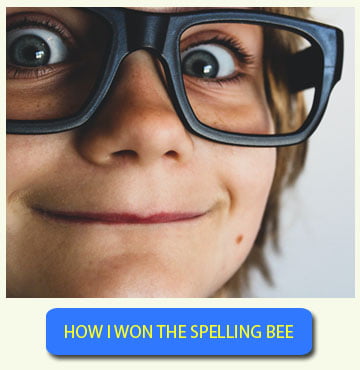One of the yearly agenda you shouldn’t miss out on is the Australian Spelling Bee competition in July. This online competition is free and open to all students from year 3 to year 8. Even though it’s only eligible for specific ages, everyone from all ages can use the practice worksheet. Especially those who want to improve their English or want to know some difficult words.
Table of Contents
What is the Australian Spelling Bee
The official name for the competition is the Prime Minister’s Spelling Bee. As the name implies, in the competition, the contestant must correctly guess a word with as few hints as possible. They must attempt 30 words given and only have 25 25-second time limit for each word. It requires focus, a wide vocabulary, and confidence to keep on going with the competition.
And because it’s an online competition, there is no room for cheaters and favoritism. The machine can’t differentiate the contestants behind the screen. Therefore, it’s all about how well their preparation is.
For a student to be eligible to participate, they need to be in a school with a running program or already participating in the Australian Spelling Bee contest. They also need to submit proof that they go to school there and can take the test on their own.
The teacher acts as the liaison between the school and the competition. They are the ones who prepare the students or bees and submit all necessary paperwork during the registration period. This includes the consent forms signed by the parents.
The registration period opens at about the same time as the school round. Therefore, the teacher must have the paperwork ready to submit when they are open. They can add up to 50 students to their class and adjust their grades accordingly.
The website for the Australian Spelling Bee has all the important details on registration and the teacher’s role in the competition. They also have practice sheets based on the categories as well as the dictionary as the preferred reference.
Two weeks after the school round, the territory or state finals ensued followed by the national finals to complete the competition. For each stage, the finalists and winner names will be sent out to the teacher’s emails.
The Student Categories
Since it receives strong enthusiasm every year, they set three distinctive categories for the students. Each category has specific difficulties and complexity in the questions. The system will put the students in respective categories based on their years. However, the teachers can adjust the grade if they think the student can take more challenges.
The distinction is easy, students in years 3 and 4 are in the green category with the least complex words. While year 5 and 6 are in orange with medium difficulty. They will encounter several complex words and hard-to-spell within the 30 words they must attempt.
And finally, the highest level or the red category. It has year 7 and 8 students or younger ones who qualify for the category. They will have more complex and unique words than the other categories.
When and How to Practice
Ideally, the teacher must have prepared their bees weeks if not months ahead. This will ensure the students are familiar with the difficulty level. Moreover, it also will help the students keep their focus on answering the questions.
Each teacher has different methods of preparing their bees. But one of the most popular methods is by using the worksheet of highly repetitive words. An example of the worksheet is available on the Australian Spelling Bee website.
However, you also can write a personalized list, especially if the bees have issues with several words. You can print a table of words and hints on each column. Then test the bees by folding or cutting the words column, leaving the hints only. Don’t forget to keep the time and have them write down the guesses as well.
After every 30 words or so, you can check for accuracy. As a starter, having up to 60 words is good as a variation/ However, this number works when you only prepare for less than five bees.
If you have more bees, you can pair them up or have them work in groups. They can quiz each other and the rest act as the timekeeper and checker. It’s a matter of how you can streamline the training process and keep it efficient.
Creating groups of bees also can help them to be more competitive. They can keep their eyes on each other as well as become more focused on answering. Many reports say they have better accuracy during practice in a group. Anyhow, you need to remind them that it’s they’re participating as individuals.
Some Last Words
When building the worksheet, make sure that you choose the words based on the right category. It would be unfair to choose words such as “prolapse”, “consciousness,” and “ asphyxiation” for the green bees.
The competition uses the Collins English Dictionary as their primary reference for spelling and definition. You also can use the online version of the Collins English dictionary for some age-appropriate definitions. To make things fun during practice, you can include some made-up words and definitions to see if the bees catch on.
You also can use the records from the previous year’s competitions to see which words have a higher frequency than the rest. Mix up the words to expand their vocabularies. And when you see a highly talented bee, you need to thread a fine line between encouraging and coercing them to participate. Don’t forget that the competition is online only, which means you also need to get the bees used to the system.
When you know someone eligible to participate in the Australian Spelling Bee, don’t hesitate and encourage them to join in. They will not regret the experience as preparing for the competition can be a lot of fun too. You can choose the difficulties and which worksheet to use. Furthermore, you also can improve your focus and vocabulary at the same time.


